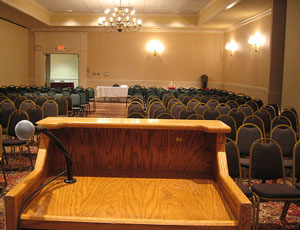 Ahhhh, the Annual General Meeting (AGM). The Chairman’s Office owns it. Legal runs it. Investor Relations designs it. Finance provides the figures. Communications and Marketing create the messages. What could possibly go wrong!
Ahhhh, the Annual General Meeting (AGM). The Chairman’s Office owns it. Legal runs it. Investor Relations designs it. Finance provides the figures. Communications and Marketing create the messages. What could possibly go wrong!
AGMs offer a once-a-year opportunity to display the best thinking your company has to offer investors and other attendees. They’re also the ideal brand showcase for you as a thought leader. Don’t waste this magic moment.
It’s soon reporting season so now is the time to take a close look at what your AGM says about your company and about you. Are you focusing only on past results or are you also presenting at least a snapshot of the present and a glimpse into the future?
Whether you are a small, medium or large firm, you can improve the impact of your AGM by focusing on three actionable steps:
- Sense
- Respond
- Disseminate
Those separate approaches all feed into the overall success of your event. The first two steps, however, need to be taken as soon as possible.
First, you’ll need to engage with stakeholders to sense and understand what their concerns are so that you can ensure they’re addressed during the AGM. It’s probably not practical to survey them directly, so you can pull together representatives of each stakeholder group and ask them to help you brainstorm.
For example, what does Investor Relations suspect are the top concerns of investors? What does Finance believe to be the critical set of numbers that will raise questions? What does Communications and Marketing think should be the key takeaway messages from the meeting?
Bring all stakeholder representatives into a room to discuss these perhaps conflicting
At your prototyping session, make an explicit commitment to respond to all stakeholder concerns in a coordinated manner. This integrated approach will assure your AGM audience that inside your company, the right hand not only knows what the left hand is doing, but has even shaken it in agreement.
The last step is to disseminate your messages well at the AGM itself with a variety of effective verbal and non-verbal approaches. You’re sharing messages about the brand in what you do and what you say during the event.
As a thought leader, your brand is reflected throughout the AGM, not just when you’re making a speech. Speech content is important, of course, but so is the way you’re presented and how you present other speakers.
If you focus on the soft elements of an AGM, as well as the hard numbers, you’ll increase your chances of having a successful event and ensure there’s less that can possibly go wrong.
Are you as a thought leader prepared to maximize the impact of the AGM on your company’s brand and your own? Ask, assess, then act. We’re here to help!
See also Part 2: Meeting the Challenge of the Shareholders Meeting
Photo: Herzogbr on Flickr
